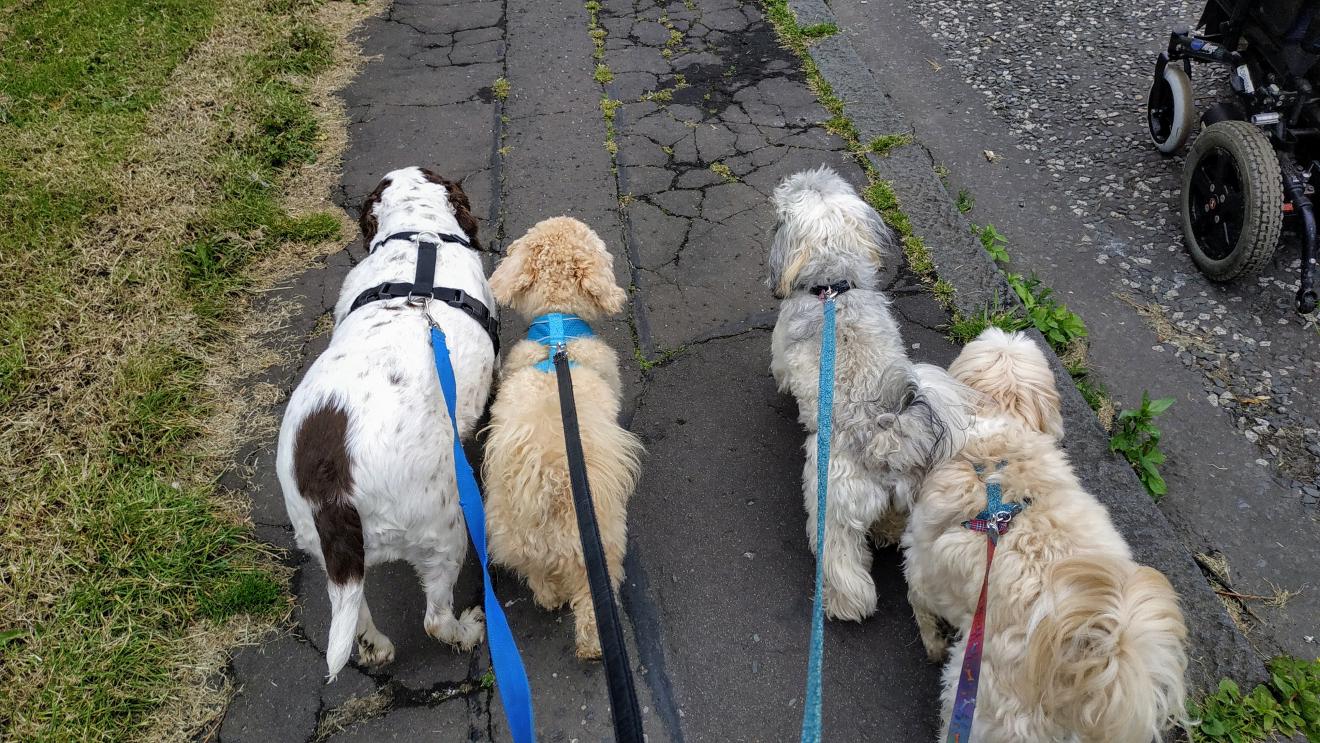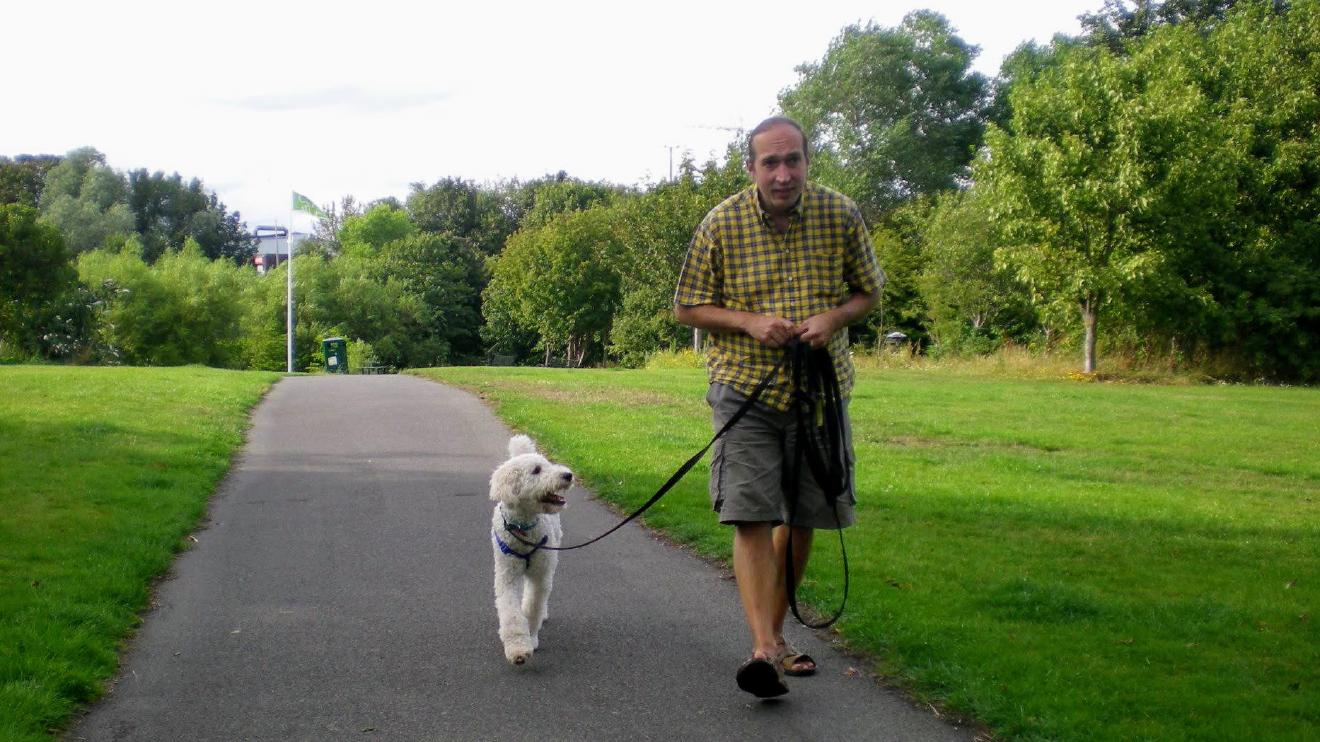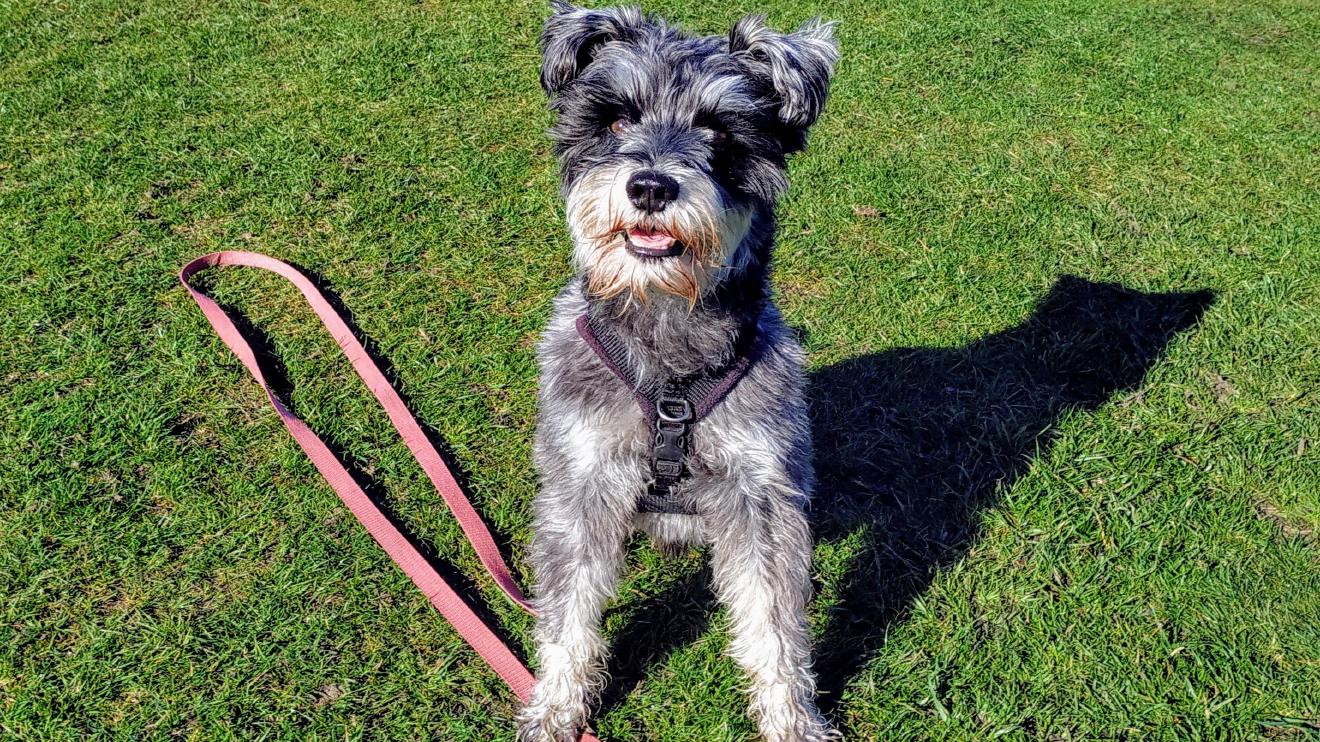Dogs will instinctively pull when they get stuck in a bush or are leashed to a slow moving human, and each time pulling brings them closer to their goal it reinforces this behaviour, even if pulling is only sporadically successful.
So teaching loose leash walking to your dog takes time and commitment but the benefits are great and will benefit you and your dog for many years. Along with increased comfort and enjoyment for both owner and dog, the reduction in stress leads to an overall improvement in the dog’s ability to cope with stress, thus reducing issues like barking, reactivity, etc.
Dog’s health
Pulling can be harmful to your dog’s joints, nerves and organs. Pulling too hard on a collar can damage a dog’s trachea, neck, nerves or vertebrae. Repeated pressure on his thyroid could injure it.
A harness is safer but could still damage your dog’s shoulders, especially if badly fitted.

Your health
Over time, holding a dog back from pulling can lead to back injuries and joint issues in your neck, shoulder and arms. There is also an increased risk of accidents and injuries to both you and the dog.
A dog constantly pulling is draining, and feels stressful. It’s hard to enjoy a walk and be aware of the environment if most of your attention is focused on the dog.

Dog behaviour
One of the greatest benefits of this type of training is that it increases attentiveness and self-control in your dog. Learning to communicate more effectively with your dog greatly enhances your overall management of your dog, and these benefits can be enjoyed in every environment, indoors and outside.
Constant restraint creates frustration and stress, particularly if you are using a collar, as that will affect blood and air flow. Reducing stress via loose leash training improves attentiveness, focus, responsiveness, self-control and happiness. And as long as you continue to use the techniques properly, the benefits continue to increase.

Your relationship with your dog
Pulling is frustrating for you too, because it is difficult to enjoy the walk while battling with a dog which wants to go in a different direction or at a different speed.
Part of teaching loose lead walking is to improve your dog’s connection to you on the walk, so that your dog is more attentive to you. This creates a harmonious bond which enables you to easily communicate with the dog so it understands what you want, and is more highly motivated to please you.
It takes time and patience to learn how to train your dog, but you’ll reap the benefits both in and out of the home, with a more contented dog which is quieter, more cooperative and much happier.
Modern technology, such as mobile phones and video conferencing, makes it very easy to teach online, thus cutting out travel time and expense. So wherever you live, whatever type of dog you have, please do get in touch if you want to organise a course in loose leash walking. I’ll be happy to help!